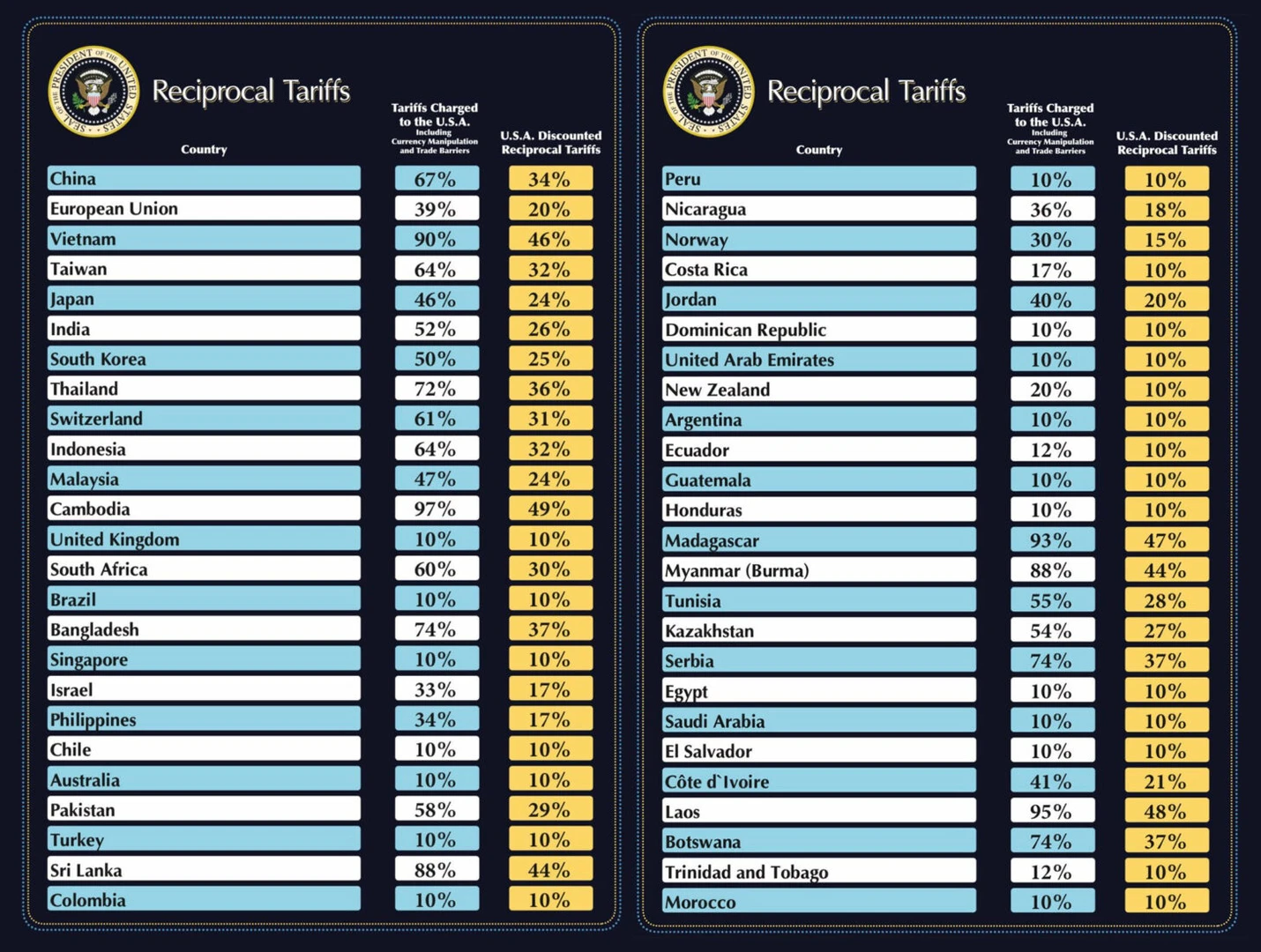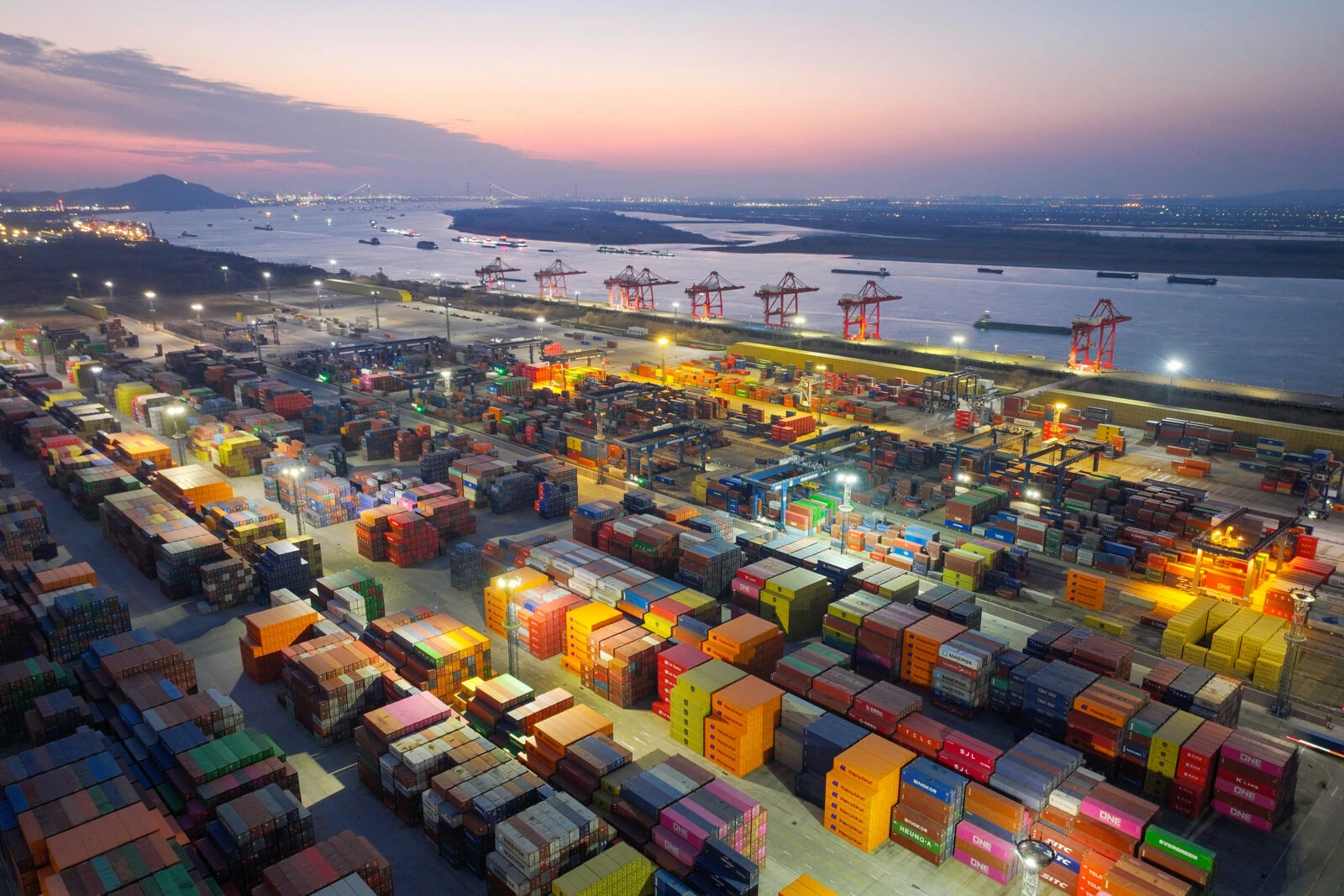Chinese President Xi vows to ‘build shared future’ in first response to Trump tariffs
 This combination of pictures shows U.S. President Donald Trump (L) looks on during a campaign rally at PPG Paints Arena in Pittsburgh, Pennsylvania on Nov. 4, 2024, and Chinese President Xi Jinping (R) attends a press conference with Serbian President Aleksandar Vucic (not pictured) after signing bilateral documents, in Belgrade, on May 8, 2024, created on Nov.7, 2024. (AFP Photo)
This combination of pictures shows U.S. President Donald Trump (L) looks on during a campaign rally at PPG Paints Arena in Pittsburgh, Pennsylvania on Nov. 4, 2024, and Chinese President Xi Jinping (R) attends a press conference with Serbian President Aleksandar Vucic (not pictured) after signing bilateral documents, in Belgrade, on May 8, 2024, created on Nov.7, 2024. (AFP Photo)
In his first response to the sweeping new U.S. tariffs, Chinese President Xi Jinping on Wednesday pledged to deepen regional cooperation and build a “community of a shared future” with neighboring countries.
His remarks came as Washington’s aggressive trade moves—including a 104% tariff on Chinese goods — sent shockwaves through global markets.
Xi’s comments were delivered at a two-day central conference on diplomacy with neighboring nations, which concluded Wednesday, according to Chinese state media.
The Chinese leader emphasized the importance of supply chain integration, economic interdependence, and “appropriately” handling disputes, as he outlined a vision for closer regional ties in the face of rising external pressure.
China responds to record US tariffs with defiance and reform agenda
China is now facing a hefty 104% tariff on its exports to the United States — the highest among dozens of countries targeted under U.S. President Donald Trump’s new global trade framework.
The tariffs, which took effect at 12:01 a.m. Eastern Time (0401 GMT), are part of Washington’s push to narrow its trade deficit by pressuring trading partners into more favorable deals.
Beijing has strongly rejected the measures, pledging to defend its economy against what it calls external economic coercion.
Chinese authorities said the country is “fully capable of countering external shocks” and possesses “enough policy tools” to cushion the impact. These tools include fiscal support, monetary adjustments, and industrial policy shifts aimed at strengthening domestic demand.
While China bore the brunt of the tariffs, other countries were also hit hard — Cambodia (49%), Vietnam (46%), Thailand (36%), Pakistan (29%), India (26%), South Korea (25%), and Japan (24%).

In a press briefing, Chinese Foreign Ministry spokesperson Lin Jian declared that Beijing would not allow its development rights or national interests to be compromised. “We will not let anyone take away the Chinese people’s legitimate right to development. We will not tolerate any attempt to harm China’s sovereignty, security, and development interests,” he said.
A government white paper released Wednesday revealed that U.S. tariffs have impacted over $500 billion worth of Chinese exports since 2018, when the trade conflict between the two nations began.

Still, Beijing is positioning the latest round of tariffs not just as a challenge but also as a chance for transformation. A weekend editorial in the Communist Party-backed People’s Daily framed the tariffs as a “strategic opportunity” to accelerate China’s shift toward a more consumption-driven economy. “We must turn pressure into motivation,” the editorial said.
Experts say this approach reflects a broader strategy. According to Lizzi Lee from the Asia Society Policy Institute’s Center for China Analysis, China is trying to turn long-standing external pressures into momentum for long-planned economic reforms. Authorities are “projecting confidence,” she said, and their swift and coordinated response suggests lessons learned from Trump’s first term.
As part of this response, Beijing announced reciprocal tariffs on U.S. goods set to take effect Thursday.
At the same time, China’s Commerce Ministry revealed new export controls on seven rare earth elements essential to technologies such as MRI machines and consumer electronics, signaling a more strategic and diversified retaliatory stance.
Rather than relying solely on tit-for-tat tariffs, China appears to be refining its approach to retaliation.
Over the past few years, Beijing has expanded trade ties with countries across Europe, Africa, Southeast Asia, Latin America, and key Asian neighbors like South Korea and Japan. This diversification may give China more flexibility in managing the fallout.
At home, the government may also boost support for private enterprises. With entrepreneurs once again in President Xi Jinping’s favor, analysts like Raymond Yeung from ANZ expect expanded policy support for innovation and growth in key sectors.
This aligns with Beijing’s broader push for self-reliance in high-tech fields. Chinese leaders have been promoting domestic capabilities in areas such as artificial intelligence and semiconductors, strengthening supply chains to reduce dependence on foreign technology—a goal that now seems even more urgent in the face of growing global trade tensions.



